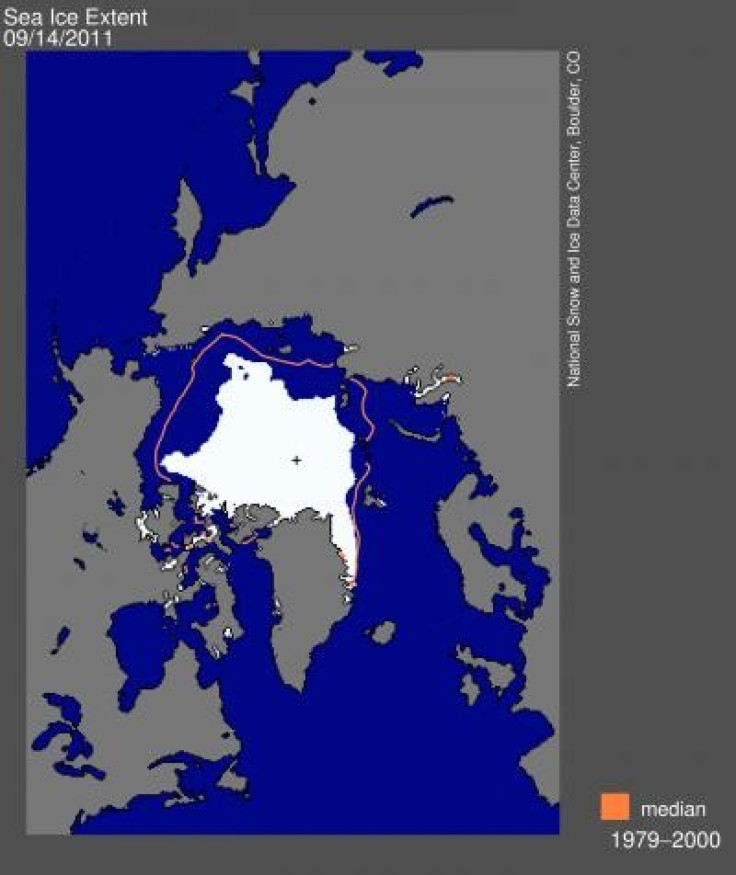Arctic Sea Ice Reaches Second Lowest in Satellite Record Since 1979 [MAP]

Arctic sea ice, that blanket of ice floating on the Arctic Ocean, has reached its lowest extent for 2011, which is the second lowest recorded since satellites began measuring it in 1979, say experts from the University of Colorado Boulder's National Snow and Ice Data Center (NSICD).
The Arctic sea ice extent fell to 1.67 million square miles, or 4.33 million square kilometers on Sept. 9. That minimum is more than one million square miles below the 1979 to 2000 monthly average extent for September, which experts say is an area larger than Texas and California combined.
Every summer that we see a very low ice extent in September sets us up for a similar situation the following year, says NSIDC Director Mark Serreze, in a release. He is also a professor in CU-Boulder's geography department.
The Arctic sea ice cover is so thin now compared to 30 years ago that it just can't take a hit anymore. Serreze adds. This overall pattern of thinning ice in the Arctic in recent decades is really starting to catch up with us.
Though this year's September minimum extent was greater than the all-time low in 2007, it remains significantly below the long-term average and is well outside the range of natural climate variability, scientists involved in the analysis say.
There are scientists who believe the melting of the Arctic sea ice is a result of warming temperatures caused by an increase in human-produced greenhouse gases that's emitted into the Earth's atmosphere.
Serreze says that in 2007, the year of record low Arctic sea ice, there was a nearly perfect set-up of specific weather conditions.
Winds pushed in more warm air over the Arctic than usual, which helped to melt sea ice. Winds also pushed the floating ice chunks together into a smaller area.
It is interesting that this year, the second lowest sea ice extent ever recorded, that we didn't see that kind of weather pattern at all, he says.
CU-Boulder's Walt Meier, an NSIDC scientist, also adds that the last five years have been the five lowest Arctic sea ice extents recorded since satellite measurements began in 1979.
The primary driver of these low sea ice conditions is rising temperatures in the Arctic, and we definitely are heading in the direction of ice-free summers, he says in a statement. Our best estimates now indicate that may occur by about 2030 or 2040.
Meier adds that there still is a chance the sea ice extent could fall slightly due to changing winds or late season melt.
During the first week of October, CU-Boulder's NSIDC will issue a full analysis of the 2011 results and a comparison to previous years.
© Copyright IBTimes 2024. All rights reserved.












